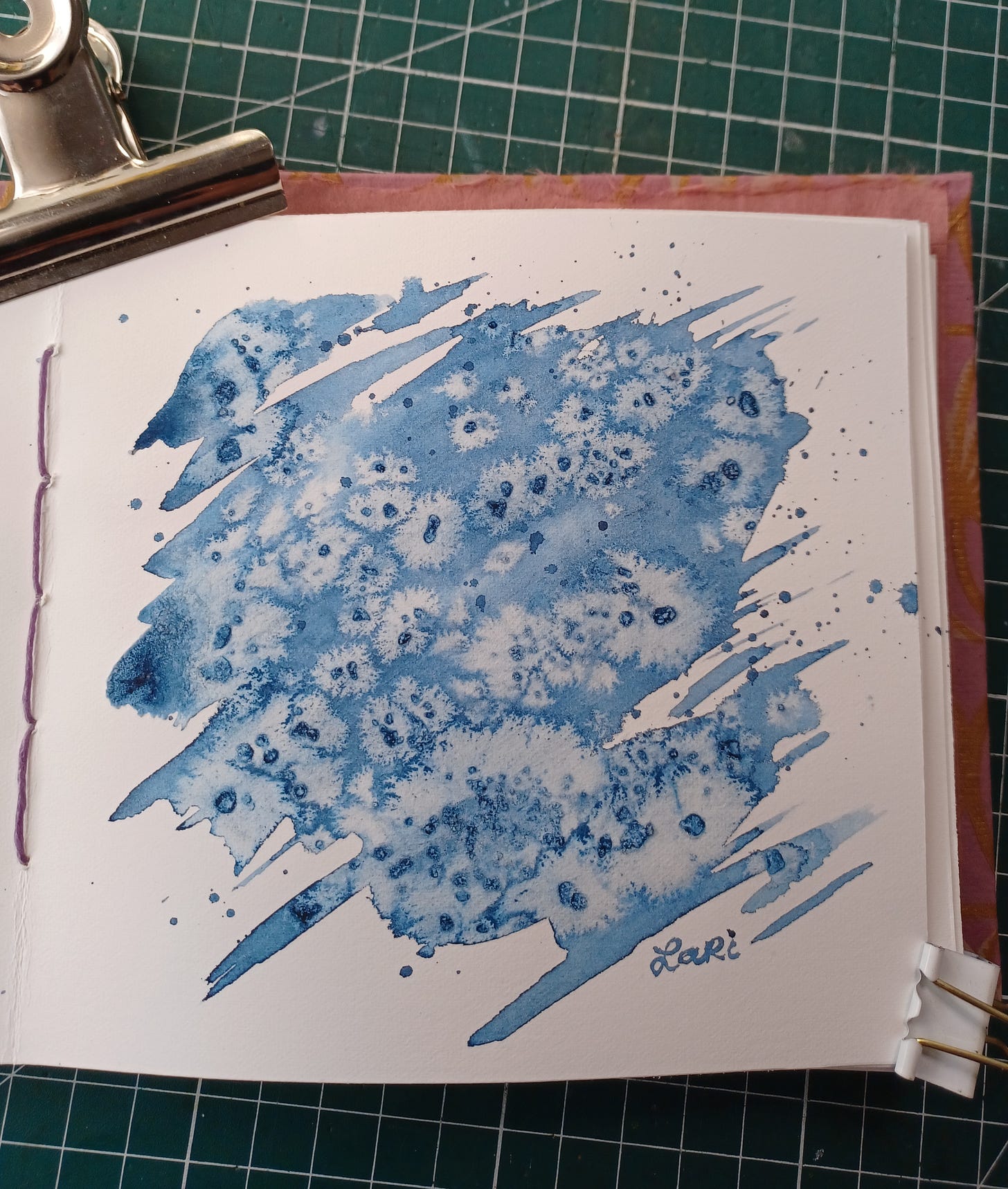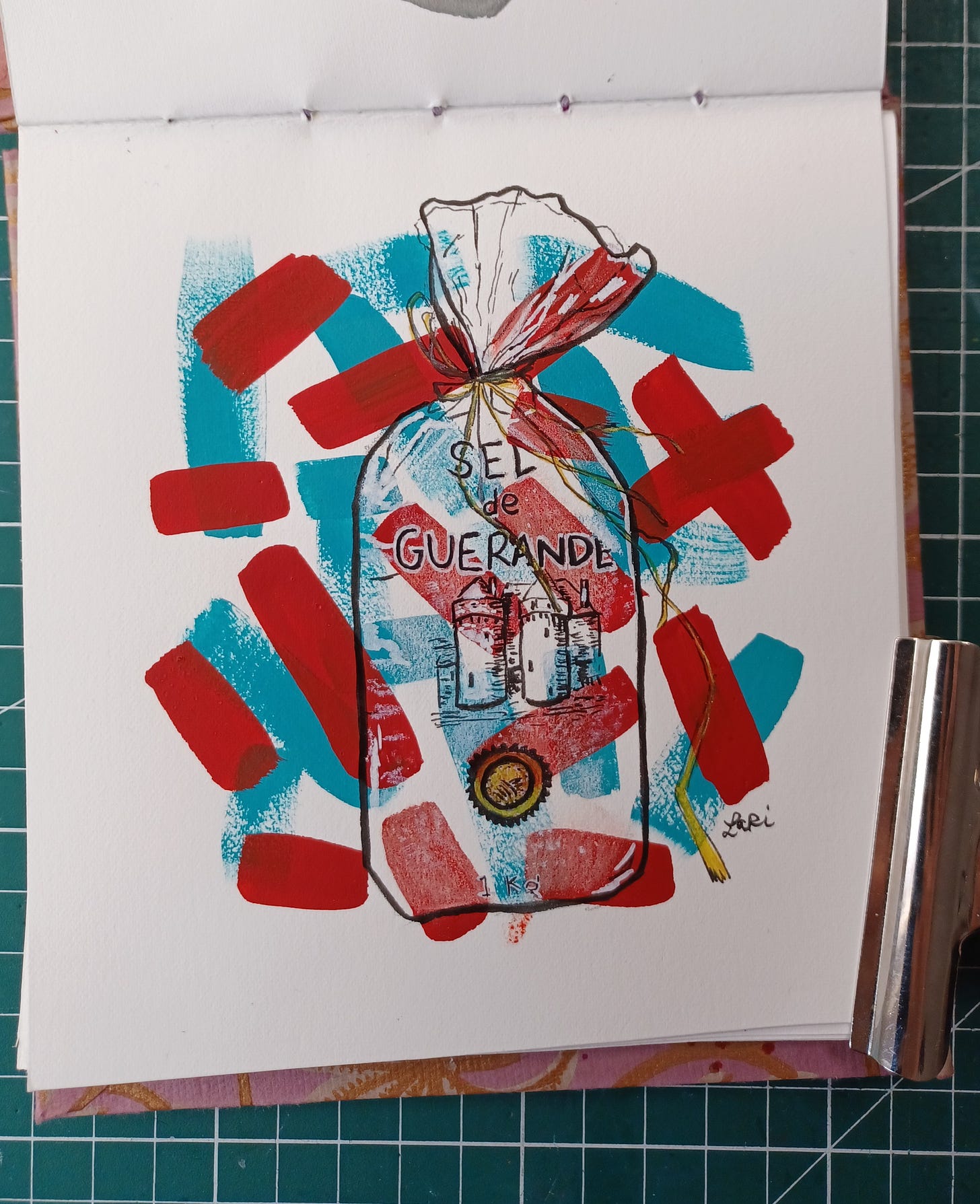Hello, and welcome back to RENDERED. This post is for everyone, so feel free to share it.
These last few months, I've been getting back to basics. I needed to hit the reset button. To recharge, to think about this newsletter, to start a new job, to just live and experience my world.
What have I been up to? Painting for painting's sake. Diving into my favorite tabletop role-playing games (Dungeons & Dragons and Vampire: the Masquerade, if you're curious). Attending my weekly Spanish class to chitchat and talk shit about our city's local politics. Walking through every neighborhood of my city, both admiring its beauty and lamenting its aggressive gentrification.
I've also been spending more time in my kitchen. Of course, what brings me primordial happiness is food: carefully choosing seasonings, absorbing aromas, or simply touching the ingredients with care... If I am to write about food, I should experience it!
Making something delicious with nothing but good ingredients and salt: this act of creation brings me great satisfaction. Especially when I feel my art is lacking and my words are insufficient. I disappoint myself far less often in the kitchen than in the art studio (or perhaps, I'm far less critical of myself in the kitchen, so that's where I head when I especially need to give myself a win).
Salt is the cornerstone, THE essential ingredient no kitchen can do without.
In many kitchen cupboards here in western France, you'll commonly find sel de Guérande (salt from Guérande). From where I live, it's about a 2-hour drive west, on the coast past Nantes, in the region of Brittany. Since I moved here 9 years ago, I've been to Brittany more than a few times, usually with my husband and in-laws. There's something restorative in the air out there--the salt flats, with water birds flitting about, scrubby vegetation and open horizon, are a sight to behold.
I'm a coastal New England girl--every time I go back to Home 1.0, my mom and I spend hours sitting in the sand, chillin' with the seagulls on their turf. So it goes to stand that I love this area of Brittany. Road signs in both French and Breton, houses with bright blue shutters and lace curtains, galettes de sarrasin and sparkling cider, open-air markets with fishmongers selling primo oysters, langoustine and shrimp...
...and of course, there's always a sea salt vendor at the market. They've got their plastic bags of salt, tied off with a bit of raffia, often sold next to little wooden spoons and scoops. I can never resist a cute tiny kitchen accessory, nor adding to my collection of salt. (Some of which I keep for my own concoctions, some of which I give to my friends/fam back home.)
That area around Guérande in Brittany reminds me very much of home--the salty air makes everything copacetic. Even seeing that distinctive black-and-white Breton flag reminds me of home, where people rep their heritage by displaying flags (I'm eyeing my fellow Puerto Ricans/Diasporicans here).
Also known as sodium chloride, salt is essential to sustaining human life. Add it to both savory and sweet dishes to enhance the flavors present and aid in the cooking process. Salt draws out moisture from raw ingredients and keeps harmful bacteria at bay, which makes it great for food preservation. It can be perfumed, infused, smoked, roasted, and flavored in numerous ways.
It's been the OG cooking necessity since prehistory, baby. Early trade routes formed in order to facilitate its movement, and salt is what put Venice on the map (more on Venice and Marco Polo here).
The etymology of the word "salt" in English shares its root in Indo-European with French sel, German Salz, Spanish sal, Russian sol... "Salary" goes back to the ancient Romans, who paid soldiers in salt. "Sauce" and "sausage" also derive from the same root.

Salt can be mined, or harvested after evaporating seawater, as is done in Guérande. Seawater collects in a controlled series of shallow canals in the clay soil--from there, the wind and sun do their work to evaporate the water.
As this happens, a layer of salt crystals forms on top, which is harvested by hand--it never touches the ground below, so it retains its pure white color. This is fleur de sel ("flower of salt"), the premium stuff: use it for sprinkling over your finished dish (sweet or savory), not for cooking. It's said there is a subtle violet flavor to it, but I admit my palate isn't refined enough to taste it.
Sel gris (gray salt) is the salt that remains, which is said to contain more nutrients like magnesium, as it comes into contact with the earth. It's coarser (and less expensive) than fleur de sel, so it's more of an all-purpose cooking salt. A fat cork-topped jar of the stuff sits permanently next to my cooktop, and it is second nature to reach in with my bare fingers to scoop some out for my pasta water, or whatever else I'm concocting that day.
I also keep a jar of sel gris in my art studio, to give texture to my paintings. I just can't get enough of it.


The salt flats of Guérande are a protected environment--salt harvesting here dates back to the Iron Age (which lasted through about 550BC). The paludiers have been using the same manual harvesting techniques since the 9th century. The delineation of the current salt flats has been the same since the monks of Landévennec Abbey mapped them out in the 10th century.
Sel de Guérande and fleur de sel de Guérande obtained the IGP label in 2012 (Indication géographique protégée, an EU-specific label whose origin and critiques I discussed last year in a TIDBITS podcast "The Origins of French Gastronomy").

As I discussed recently with my paid subscribers, I needed to solidify my position/accept my role as the "impartial narrator" of food stories. I relate to food, and the stories I tell here in RENDERED, in a personal way. But I grew wary at the self-indulgence of sharing my lived experience, worried that the mundaneness of my reflections pales in importance to The Big Story.
But why fight the mundaneness of the everyday? That's where the good stuff happens—we don't just leapfrog from one Big Thing to the next. Alicia Kennedy discussed the merits of acknowledging the everyday, the domestic, back in January, and the piece stuck with me.
I am myself prone to shunning the seemingly-trivial little things, in favor of Some Profound Point. Do all my essays need to come to a Big Conclusion? I daresay not. Why complicate things more than they already are? There is joy, redemption, solace in the everyday existence.
What I mean to say is that Guérande salt has been there for me, man. So in the interest of getting back to basics, what better place to start than with salt? Especially because it's so accessible to me, and because it's easy to take for granted.
Thank you for reading! A reminder that I have updated my upload schedule: I alternate between RENDERED and TIDBITS, released mid-month.
RENDERED is a one-woman production, and your support is appreciated! If you're hungry for more content in audio format, consider a paid subscription. For 5€, you can get a month's worth of access to my narrated essay series, TIDBITS. Yearly subscribers get a RENDERED logo sticker, and Art Collectors receive a custom painting.
If you enjoy my work and would like to support my efforts, share RENDERED with a friend/leave a comment, visit my web store, subscribe to my Youtube channel, or consider a paid subscription. I also accept one-time donations via my website. To follow my art practice, catch me on Instagram or view my portfolio on my website. Be well, take care of your heart, and I'll be back next month.
Bibliography
"5 minutes pour tout savoir sur le sel de Guérande." France.fr, 11 May 2020.
Davidson, Alan and Tom Jaine, ed. The Oxford Companion to Food, Third Edition. Oxford University Press, 2014. p. 706-7.
McGee, Harold. On Food and Cooking: The Science and Lore of the Kitchen. Scribner, 2004. p. 639-644.
"The history of Guérande salt." Le Guerandais.
"Visiter les marais salants." Ville de Guérande.



